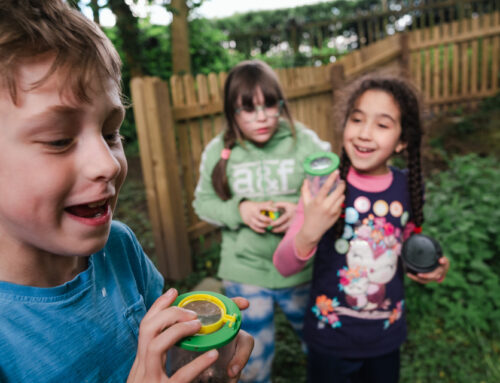As children grow older, they develop their ability to research independently. Knowing how to research effectively gives children with high learning potential a head start in organising their learning, so that they can use their ability to full advantage.
With so many facts, figures and opinions available, children need to learn how to be selective in what they use, where to source correct information and how to hone their thinking when it comes to choosing the right material. At some point, they may also find, for the first time in their life, that their ability to learn quickly and recall facts isn’t enough to do well in tests and that they have to learn how to take notes and revise. Research and revision strategies can help.
Research Tips to Try Together
Estimate how long the research will take
It is a common problem to under- or over-estimate how long something will take, depending on the type of investigation required. Help a child who is struggling with time management, by creating a plan together. Draw up a table with four columns. Together, break down the task into the small steps that are required to complete the project and list these in the left-hand column. In the second column, estimate the time required. In the third column, plan the required dates for these steps. Leave a fourth column blank, to be used to record the actual amount of time each takes or for notes. This will be useful to help you to review the project afterwards.
Use research tasks to offer challenge
Stretch a young person by asking them to research a topic that’s currently beyond their year group curriculum. If they feel that it’s too difficult, remember that high potential learners need to be challenged and to occasionally struggle to develop resilience. If they enjoy using a computer or tablet, could they make a video about it? Ask them to think about creative props for presenting their results e.g. a map from their bedroom wall could be used to highlight climate areas.
Read to research
Want an answer? Many of today’s children (and adults) will go straight to Google to ask their questions; even those young people with high learning potential who normally gorge on books. However, if they type in the first phrase that comes into their head, chances are that the web browser will lead them to pages that aren’t best suited to the task. Young people need to learn how to define their search terms. For example, “Henry VIII Children” will bring up websites such as Wikipedia, but by adding a qualifying term such as “BBC” or “KS3” they will receive better suggestions. High potential learners also need to learn how to validate information. Background knowledge and a questioning state of mind will help children with high learning potential identify inaccurate and misleading information easily by comparing it with other sources.
If they are working on a topic that’s likely to be in one of the books in your house, consider pointing the child to it. It may be much more focussed on the topic and your child can locate the information quickly, without other internet distractions. A library visit could help too.
Read and remember
When reading more challenging information, educational research has found that the SQ3R reading method is most effective. It consists of five steps – survey, question, read, recall, review. See: https://www.rlf.org.uk/resources/how-to-read-sq3r/
Studying
Take powerful notes with powerful tools
Note-taking, whether while listening to a teacher or while reading, can be negatively associated with effort. A clever child may well feel tempted to passively sit while a topic is being set (especially if they say they already know it), thus avoiding taking handwritten notes. However, notes taken at the time may help to improve later work or knowledge for exams.
Developed by Cornell University, the Cornell Method involves a two column note system. Divide the paper into two uneven columns, take notes on the right-hand side which should be twice the size of the “cue column” (headlines) on the left. This method should suit both reluctant note takers and learners who aren’t good at organisation, although natural maturity may influence their approach to it. See this quick video tutorial: http://lsc.cornell.edu/study-skills/cornell-note-taking-system/
By thinking of the left-hand column as headlines pointing to the right-hand column notes, a student could see the Cornell format as a chat that they have with themselves while learning. “They said this, but the main ideas are…” If they doesn’t find this method works well for them, ask if they can share the notes with you and you discuss the topics together – it may make it more lively and prevent the negativity that is going into the note-taking process.
Writing well
Mind maps are excellent for organising ideas before commencing a writing task. They can be great for creativity, allowing associations to appear that otherwise would not have surfaced. Learn how to create one here: https://potentialplusuk.org/index.php/2018/06/03/mind-mapping/
Preventing plagiarism
In KS3 and KS4, students are expected to present original work which shows that they’ve really understood what they’re doing in their research. It also gets them used to writing essays before the onset of major exams. Check that they can explain the terminology that they’re using, and that they’re writing it in their own words.
Revision
Go visual
Creating flashcards for definitions, formulae, or lists that need memorising is useful for a faster learning approach. These are cheap to make too. Write topics on one side of the card, and answers on the back. Flashcards test the ability to recall information but in doing so will strengthen that ability. Chunk the cards into small packs (7-9 items). Or try Quizlet. A live quiz on Kahoot will appeal to a child who likes learning electronically, while practice quizzes provide feedback.
Visual learners will appreciate information presented in diagrams, charts, videos and pictures. If they’re not already to hand, look for alternative sources. Place them as revision prompts (along with key words – colour coded if liked), anywhere that a student is likely to look at them e.g. behind the bedroom or bathroom door, or on the fridge leading to the snacks! YouTube has instructional content on a huge range of topics: https://www.youtube.com/learning (but check you’re happy with the source and the way that it’s presented).
Familiarity eases stress
If possible, read the marking scheme for forthcoming exams, to understand not only how many marks are given but also what the examiners are looking for. Even high potential learners should practise past papers under timed conditions. This not only tests and improves subject knowledge, but on the day of the real exam their brains will be less likely to perceive the situation as unfamiliar, leading to a stress response.
Try mnemonic techniques
Memory for factual information is important in school but, if a learner struggles to remember things, they could benefit from mnemonics. One tried-and-tested technique is called Mind Palace (or several other names). It asks you to imagine a journey through a location you know well, such as your home. At each of many places on that journey, imagine the item you need to remember. If it would be ridiculous in that location, so much the better – children won’t resist the fun! Ideally make it interact with the scene. For example, a giant number 3 could bang its head on the doorframe entering your house, to help you remember the start of Pi.
A related technique is to chain items into a unique story. For example, to remember the noble gases, a helium balloon could float up to a neon sign and have an argument (argon) with the waiting Superman (krypton) before the two are photographed (xenon) by a radioactivity symbol (radon).
Once a student has created their memorable journey or story, they should retrace it in their mind three times a day until it enters their long-term memory.
In another technique try creating acrostics, where the first letter acts as a prompt, e.g. to remember the planets: My Very Excellent Mother Just Served Us Nothing.
Don’t overdo it
Even children with high learning potential who are passionate about a subject need to refresh their mind with a break or else lose concentration. They should divide their time up into 40-45 minute spans, and then take a break.
Further Reading
For further reading, two useful books written by Stella Cotrell as part of the Macmillan Study series are: The Study Skills Handbook, which shows students how to tailor their learning to their individual needs and The Exam Skills Handbook, with an easy-to-follow set of strategies and techniques that build into a plan for achieving best possible exam performance.
About the author: Sarah Box is a writer and editor for Potential Plus UK. She has also written about France for national publications, loves languages and hopes one day to learn Mandarin.






